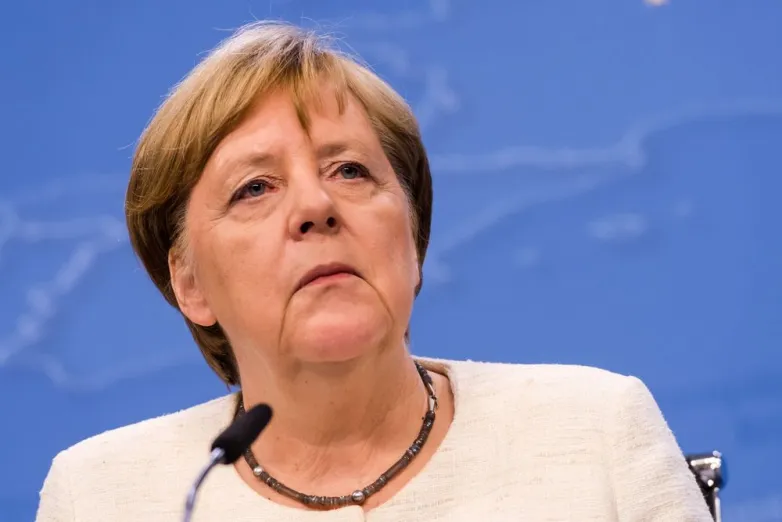Merkel Flip-Flops on Solar, Wind Targets in Climate-Action Plan
Oct 9, 2019 02:22 PM ET

Chancellor Angela Merkel’s coalition is wavering on whether to focus on wind or solar power over the next decade to help Germany cut carbon emissions.
Merkel’s ruling bloc in Berlin is fine-tuning plans aired last month to reduce CO2 output by 2030 after it barely budged in recent years. While bumping up green electricity’s share in the power mix is central to achieving the goal, successive drafts of a new climate bill show the coalition still undecided over whether to put wind or solar power in the driving seat.
| GERMAN WIND AND SOLAR TARGETS SEE-SAW IN A FEDERAL REVAMP OF CLIMATE POLICY | |||
|---|---|---|---|
| Actual | Target set Sept. 24 | Target set Oct. 2 | |
| Onshore wind: | 53.4GW* | 80GW | 67-71GW |
| Offshore wind: | 7.2GW | 20GW | 20GW |
| Solar: | 48GW | 85GW | 98GW |
Source: Draft “Climate Protection Program 2030” legislation, Fraunhofer ISE 2019
* Gigawatts of installed capacity
“Switching the targeted goal posts so swiftly and suddenly undermines confidence in the reliability of government climate policy,” Christoph Zipf, a spokesman for the BWE wind lobby, said by phone. “Investors, developers, the thousands of people in renewable jobs need stable growth targets going forward.”
The Berlin-based wind lobby represents 20,000 investors, developers and equipment makers.
The latest draft of the sweeping legislation dated Oct. 2 shows a marked swing in favor of pushing solar as the main driver for renewable power, upending a Sept. 24 document that envisaged wind and solar growing in tandem. As Merkel’s Cabinet prepares to sign off on the bill on Oct. 9, industry groups are alarmed by the indecision.
Merkel’s coalition committed to boosting green electricity’s share in the nation’s power mix to 65% by 2030 from about 44% today. Clean energy overtook coal power generation for the first time last year. It needs to be built faster to compensate for the coal plant closures slated by 2022, the same year Germany’s last nuclear reactor is shut.
Green Beats Coal
German clean energy generation overtook coal in 2018

Fraunhofer, Destasix, EEX, Tennet, 50Hertz
Graphic shows net forecast generation of main power sources in percent
The Economy and Energy Ministry declined to comment on wind and solar power targets chiseled in the climate plan before its sealed this week.
The latest draft of the 180-page bill shows that the target for solar jumped 13 gigawatts in less than a week’s deliberations. Onshore wind power shrank by about the same scale.
The solar boost may equate to enough capacity to supply power to about 10 million homes, measured against the capacity of the Hornsea 1 offshore wind park. The world’s largest offshore project with a 1.22 gigawatt capacity went on line in February and is set provide power to more than 1 million U.K. homes, according to owners Orsted A/S.
“At the end of the day, it’s not so relevant for the consumer whether the kettle is running on solar or wind power -- it should be green and running,” said Bruno Burger, a professor who monitors German power trends for the Fraunhofer ISE think tank in Freiburg.
“Solar is fast to build, cheap to build and a relatively inconspicuous addition to the landscape -- it doesn’t polarize opinion as do new wind parks,” he said.
Also read
- Fast Prototyping Boosts Solar Efficiency and Sustainability
- 5 Practical Solar Solutions for Modern Technology Needs
- Understanding Renewable Energy Infrastructure - New Trends in Technology
- Wiltshire Solar Solutions Explained: Benefits for Local Homeowners
- Exploring the Key Players in Dubai’s Solar Panel Distribution Market

